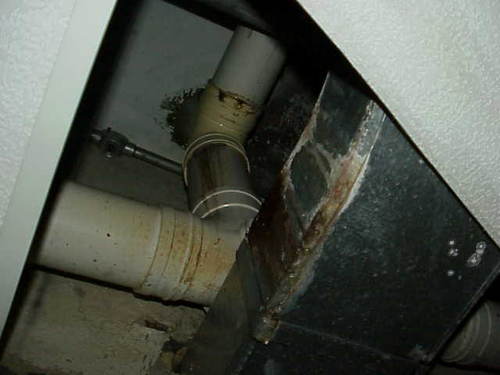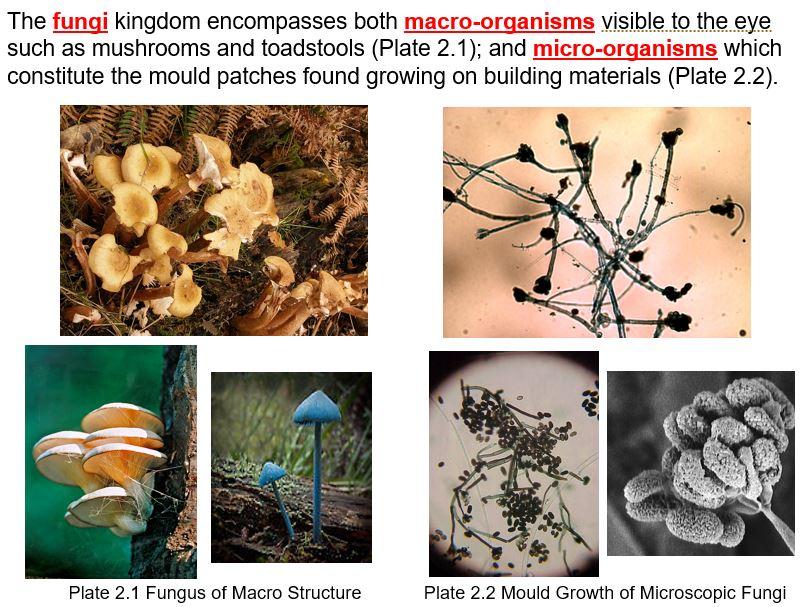Case 2
- Introduction
- Causes of Defects
- Good Practices
- Standards
- Maintenance and Diagnostics
- Remedial
- Similar Cases
- References
Cause of Defects
- When gypsum ceiling board gets damp, mould growth of the surfaces may occur since these porous materials might be biodegradable. Lack of water-tightness that may be due to poor fixing or poor supporting to the pipe, could lead water leakages at joints and this in turn may damp the ceiling board when water drips on the ceiling board.
- Little ventilation inside the wet area and the temperature stays warm in the small enclosure. This environment becomes ideal for mould growth.
- Regular inspection on the performance of overhead pipes above the ceiling boards might not have been carried out properly. If any pipe leakage is detected, this could be rectified promptly to prevent subsequent fungi growth on ceiling boards.

The mould growth may have been accelerated due to inadequate ventilation on top of the surface being consistently damp. If the environment is warm and damp, it provides a conducive environment for fungal growth.
Mould do not need sunlight to grow. They are the microorganisms of the fungi kingdom that grow in the form of multicellular filaments (yeasts grow as single cells). The macroorganisms of the fungi kingdom include mushrooms and toadstools.
On surfaces shaded from the direct rays of the sun and where the humidity level is high, moulds rather than algae are the organisms that are likely to proliferate. Unlike algae, moulds are unable to synthesise their own food and thus have to rely on the medium on which they grow on to provide the nutrients necessary for their growth. Mould begin to grow when the relative humidity of the surface exceeds 70%, and for this reason, they are usually found on internal surfaces of buildings, such as in bathrooms and kitchens, and on ceiling boards, wallpaper and glass panels. They have also been found on façades where there is prolonged moisture retention or dampness, especially on water absorbing materials (Table 4.3).
Spores need three things to grow into moulds:
(1) Nutrients: Food for spores — organic matter, often cellulose, water absorbing.
(2) Moisture: Moisture is required to begin the decaying process caused by the mould.
(3) Time: Mould growth begins between 24 hours and 10 days from the provision of the growing conditions.

